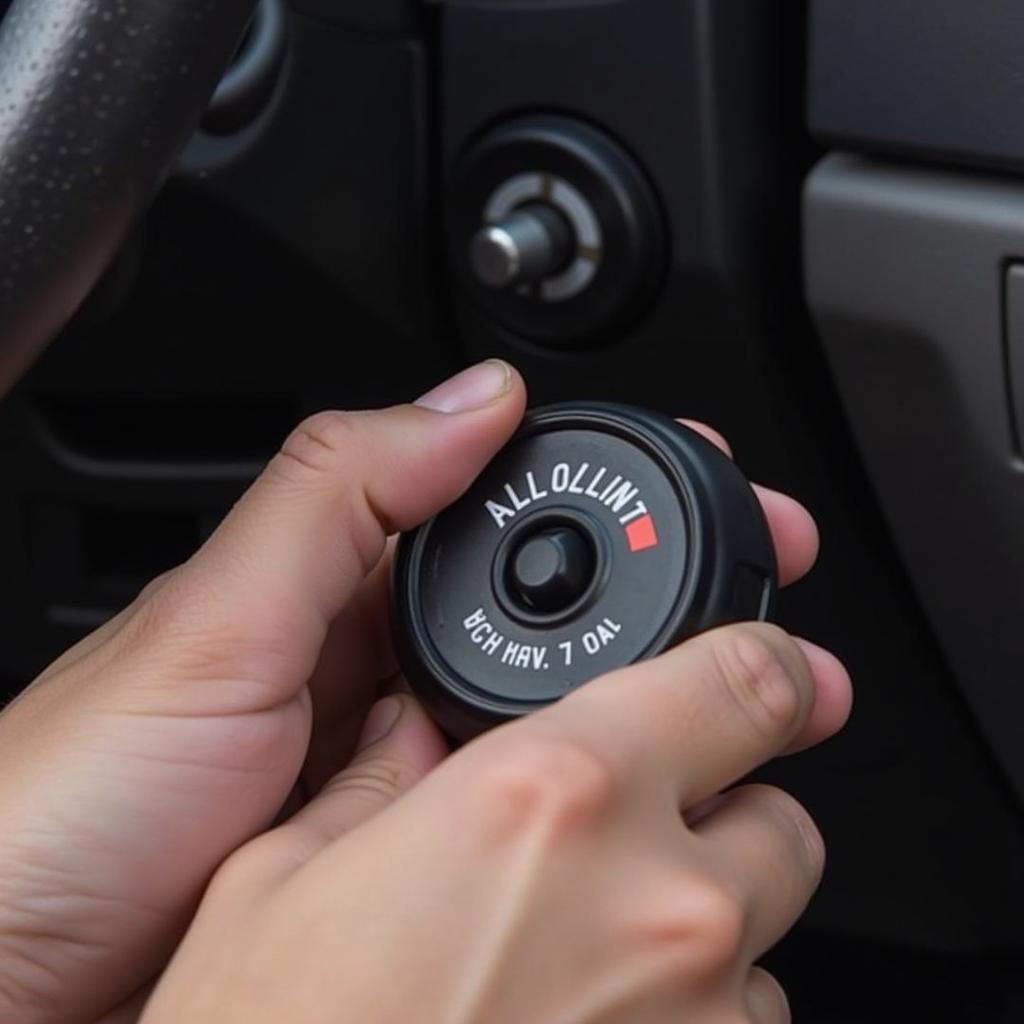The AdBlue warning light on your Ford Transit can be a stressful sight. It indicates an issue with the AdBlue system, which is crucial for reducing harmful emissions. This article will break down the common reasons for this warning light, provide solutions, and answer your most pressing questions.
Understanding the AdBlue System
Before diving into the solutions, it’s important to grasp the basics of the AdBlue system. This system uses a urea solution (AdBlue) injected into the exhaust system to reduce harmful nitrogen oxide (NOx) emissions. The system consists of:
- AdBlue tank: Stores the urea solution.
- AdBlue pump: Delivers AdBlue to the injectors.
- AdBlue injectors: Spray AdBlue into the exhaust stream.
- Sensors: Monitor AdBlue levels and quality.
Common Causes of the AdBlue Warning Light
Here are the most common reasons for your Ford Transit’s AdBlue warning light to come on:
1. Low AdBlue Level
This is the most straightforward reason. When the AdBlue tank runs low, the warning light will illuminate, prompting you to refill the tank.
- Solution: Simply refill the AdBlue tank. You can find AdBlue at most truck stops and auto parts stores.
2. AdBlue Quality Issues
The AdBlue system is sensitive to the quality of the solution. Using incorrect AdBlue or contaminated AdBlue can trigger the warning light.
- Solution: Ensure you’re using the correct AdBlue, which meets the ISO 22241 standard. If you suspect contamination, drain and refill the tank with fresh AdBlue.
3. AdBlue Sensor Malfunction
The AdBlue sensors might be faulty, giving inaccurate readings about AdBlue levels or quality.
- Solution: Get the sensors diagnosed by a qualified mechanic. A scan tool can read sensor data and pinpoint any issues.
4. AdBlue Pump Failure
A malfunctioning AdBlue pump can prevent the system from delivering the solution to the injectors.
- Solution: Have the pump inspected and potentially replaced by a mechanic.
5. AdBlue Injector Clogging
The AdBlue injectors can become clogged with deposits, leading to reduced AdBlue flow.
- Solution: A professional cleaning of the injectors might be necessary.
6. AdBlue System Software Glitch
Sometimes, software glitches within the AdBlue system can trigger false warnings.
- Solution: Have the system software updated by a mechanic or specialist who has access to the necessary tools.
How to Reset the AdBlue Warning Light?
“Can I reset the AdBlue warning light myself?” – This is a common question. It’s important to note that simply resetting the warning light without addressing the underlying issue is not recommended.
In some cases, you might be able to temporarily reset the light by following these steps:
- Turn off the engine.
- Open the hood.
- Locate the AdBlue tank.
- Remove the cap and carefully pour fresh AdBlue into the tank.
- Replace the cap securely.
- Turn the ignition key to the “on” position, but do not start the engine.
- Press and hold the gas pedal for about 10 seconds.
- Release the gas pedal and turn the ignition off.
- Start the engine.
This procedure might temporarily reset the warning light, but if the issue persists, you’ll need to get it checked by a mechanic.
What to do When the AdBlue Warning Light Stays On?
If you’ve refilled the tank, ensured good AdBlue quality, and the warning light remains on, it’s time to consult a mechanic.
Here’s what they can do:
- Diagnose the issue: Using a scan tool, they can check for error codes in the AdBlue system.
- Inspect sensors and components: They can inspect the AdBlue sensors, pump, injectors, and other related components for damage or malfunctions.
- Repair or replace components: If necessary, they can repair or replace faulty components to restore the AdBlue system’s functionality.
“How long can I drive with the AdBlue warning light on?” It’s best to address the issue promptly. Driving with the warning light on can lead to reduced engine performance, potential damage to the AdBlue system, and even the inability to start your vehicle.
FAQs
Q: What happens if I don’t fix the AdBlue issue?
A: Ignoring the issue can result in a reduction in engine power, potential engine damage, and ultimately, a vehicle that won’t start.
Q: Can I add water to the AdBlue tank?
A: Absolutely not. Water will contaminate the AdBlue solution, making it unusable.
Q: How often do I need to refill the AdBlue tank?
A: The AdBlue tank’s capacity varies depending on the model. Typically, you’ll need to refill it every 500-800 miles, but consult your owner’s manual for specifics.
Q: How do I find a qualified mechanic to work on the AdBlue system?
A: Look for mechanics specializing in diesel vehicles, especially those with experience working on Ford Transit models. You can also ask for recommendations from trusted friends or family members.
Q: Is there a way to disable the AdBlue system permanently?
A: This is not recommended. It’s illegal in most jurisdictions and can lead to significant fines and even vehicle seizure.
Q: What’s the cost of repairing AdBlue system issues?
A: Costs can vary depending on the nature of the issue and the parts required. You can expect to pay anywhere from a few hundred dollars for a simple refill to several thousand dollars for more complex repairs.
Conclusion
The AdBlue warning light on your Ford Transit is a reminder to pay attention to the health of your emissions system. While a low AdBlue level is easily resolved, more complex issues require professional intervention. Be proactive, address the issue promptly, and keep your Ford Transit running smoothly and emission-free!

